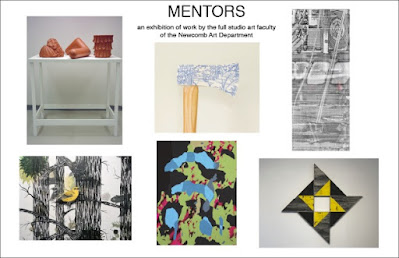Newcomb Art Department Professor Aaron Collier opened a two-person exhibition entitled "Revival" on October 24 at Octavia Art Gallery in Houston, TX. The exhibition runs through November 30.
“The “Everything You Need to Know” website that intends to prepare visitors to Palatine Hill in Rome offers the following caution: “Without a guide or guidebook, it can be difficult to make sense of the ruins of the Palatine… you don’t want to be one of those tourists who wanders aimlessly around the hill, with no idea of what they’re looking at.”
In September of 2017, Collier found himself to be just exactly that, a tourist without the benefit of a guide. It was the challenge of making sense of Palatine’s excavations and ruins, with their innumerable fragments, pieces, and remains, the profound inability to explain away or see through every layer, the overwhelming sense of bewilderment and mystery, that inspired the series Of Rocks and Ruins.
With these works, Collier implements several modes of image making towards squaring with the central questions that drive his research: “What to do with a small and incomplete knowledge of a vast, complex, and multivalent world? How are images, which are inherently shards or snippets of information, able to convey this inability to know in full?”.
Artwork: Fact and Spirit, 2018, Flashe on canvas, 38 x 38.”




















